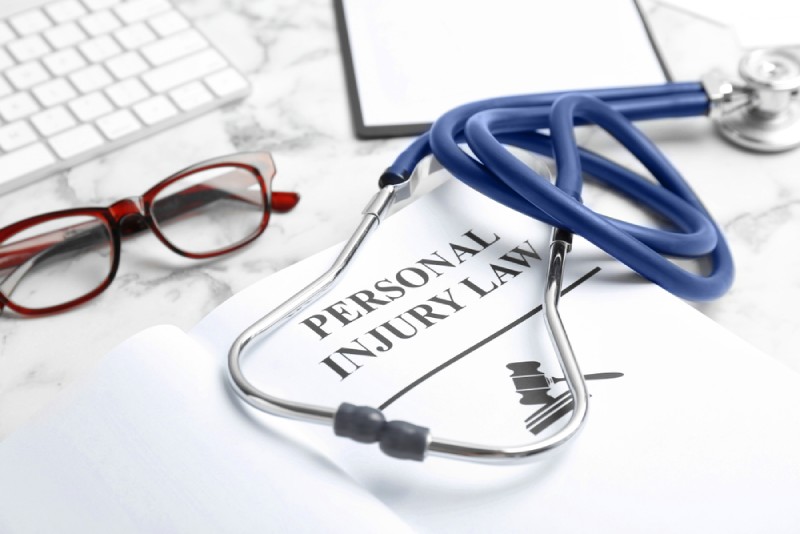
Understanding Comparative Negligence: Insights from a Personal Injury Attorney
- Business
- June 28, 2023
Introduction
Accidents always bring with them a great deal of stress, uncertainty and questions, especially when the fault is shared among multiple parties. As a victim of an accident, understanding the laws and rules related to comparative negligence can be extremely beneficial. Comparative negligence laws determine the liability of the parties involved in an accident and how the compensation is awarded.
In this article, we will gain insights into comparative negligence laws through the perspective of a personal injury attorney. We will learn about the impact of shared fault on your claim and how an attorney can help protect your rights in such situations. We will also review the strategies to overcome comparative negligence and how to leverage insurance companies in comparative negligence claims.
Defining Comparative Negligence
Comparative negligence is a legal concept used to determine the fault and liability in cases of personal injury. It is based on the assumption that parties involved in an accident can be partially responsible. The purpose of this concept is to determine the degree of fault assigned to each party.
Generally, there are two basic approaches to comparative negligence. Contributory negligence means that if the plaintiff was partially responsible for the accident, they cannot recover any losses at all.
On the other hand, comparative negligence means that each party is assigned a percentage of fault that is proportional to their degree of responsibility. Depending on the severity of the negligence, this percentage can range from zero to 100%. Consequently, each party’s recovery is based on the degree of their comparative negligence.
Impact of Shared Fault
When it comes to personal injury cases, comparative negligence laws play an important role in determining the outcome of a claim. This is because comparative negligence laws determine how much fault – or “negligence” – is attributed to each party involved. Depending on the state, the amount of fault attributed to each party can drastically affect the compensation the claimant receives.
When two or more parties are involved in an incident, shared fault can have a significant impact on the outcome of a personal injury claim. The law may attribute fault to each party, and the claimant can only receive compensation proportional to their assigned fault percentage.
If the law says the claimant is 50% responsible and the other party is 50% responsible, the claimant can only get half of the total damages. A good lawyer can make sure that someone who was hurt gets the money they should.
Evaluating Evidence
When pursuing a personal injury claim, it’s essential to accurately determine the degree of fault for each party involved. This is where a personal injury attorney can be invaluable. An experienced attorney has the knowledge and skills to ensure that the evidence is fairly evaluated and that the claimant’s rights are not violated.
Evaluating evidence is the foundation of any personal injury case. It is important to collect evidence that accurately demonstrates the extent of the plaintiff’s damages and the degree of responsibility for each party. This can include medical records, witness statements, and expert testimony.
In comparative negligence cases, the evidence must be evaluated carefully to determine who is at fault and the extent of the damages. A personal injury attorney can help review the evidence and present the case in court.
Strategies to Overcome Comparative Negligence
Overcoming comparative negligence can be a daunting task. It’s important to understand that the burden of proof rests with the claimant, who must demonstrate that the other party was negligent. To do this, it’s critical to be prepared for court proceedings and to leverage the experience and knowledge of an experienced personal injury attorney.
In a comparative negligence claim, it is vital to gather the right evidence to prove fault. This involves examining all the details of the incident, such as witness statements, police reports, medical records, and other relevant documents to establish the facts. A personal injury attorney can help assemble all the necessary evidence to support your case.
It’s also important to approach insurance companies strategically. Your personal injury attorney can help negotiate on your behalf, ensuring that you receive the maximum compensation possible. They can also help you understand the nuances of comparative negligence laws and advise you on the best course of action.
Leveraging Insurance Companies
When pursuing a personal injury claim, one of the most important steps to take is to work with the insurance companies involved. In the case of comparative negligence, it’s important to understand how shared fault will affect the outcome of the claim.
An experienced personal injury attorney St George Utah can help you negotiate with the insurance company and ensure that your rights are protected. They can leverage their legal expertise to help you secure a fair settlement. An attorney can help find sources of compensation, like claims against responsible parties. By having an experienced attorney on your side, you will be better prepared to secure the best possible outcome for your case.
Conclusion
Comparative negligence laws decide what happens in a personal injury case when the person making the claim is partly or fully responsible for their own injuries. These laws vary between states, so an experienced personal injury attorney is essential for navigating the complexities of shared fault and evaluating evidence.
An attorney can also help to prepare for court proceedings and navigate the claims process with insurance companies. It’s important to understand comparative negligence laws and how shared fault affects a personal injury claim. This helps to protect your rights and get fair compensation.